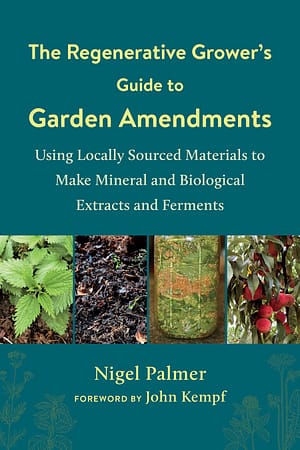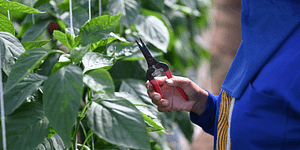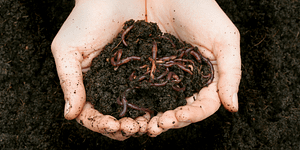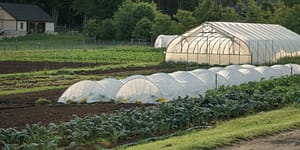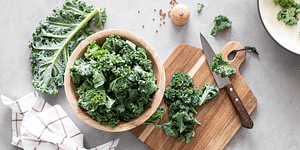Out of the Kitchen, Into the Garden: Apple Cider Vinegar

Apple cider vinegar isn’t just for the kitchen, it’s also extremely useful in creating amendments for your garden. Before you reach for that bottle in your pantry, if you have an apple tree (or a crab apple tree) use the ground apples to make your own! After your apple cider vinegar is brewed, you’re ready to concoct a vinegar extraction for your garden.
The following is an excerpt from The Regenerative Grower’s Guide to Garden Amendments by Nigel Palmer. It has been adapted for the web.
Making Apple Cider Vinegar
Almost anybody can make bad wine. Vinegar is simply a batch of wine gone bad. Homesteaders find many applications for apple cider vinegar, and it is very easy to make your own. For garden amendments, apple cider vinegar can be used to extract minerals from shells, bones, or other local materials. Its acidity breaks down mineral constituents. Making apple cider vinegar with apples that would otherwise be thrown away closes a waste cycle in a satisfying way. Drops from a tree in your backyard or in a local field will work fine. Many old apple trees that have been ignored and left untended still put out quantities of fruit. If you collect apples from a farm, keep in mind that there may be pesticide, herbicide, and fungicide residues on the fruit. Many of these chemicals are not water-soluble and will not simply wash off in water. Do you want to introduce them into your growing environment?
It takes 2 to 3 months for apples to ferment into vinegar, depending on ambient temperatures, and they should be kept out of the sun in a well ventilated space and undisturbed during that time. If you are planning to make a large batch, you may want to position the container in the right environment for brewing before you add the apples and water. When the pH drops to 5 or lower, the liquid is vinegar and may be decanted. Once I set up a batch of apples to ferment, I generally forget all about them until one day I walk by the crock and wonder how things are doing. I discover that the months have passed by and the contents are ready for decanting.

Image from The Regenerative Grower’s Guide to Garden Amendments
Ingredients
- Unsprayed apples
- Glass jar or crock
- Good water
- Plate or flat rock (optional)
- Clean piece of cloth
- Board, large enough to cover bucket top
- pH paper Strainer
Procedure
Step 1. Gather unsprayed apples as available. There’s no need to wash the apples, because the biology on the fruits’ surfaces is desired. Do not use rotten apples.
Step 2. Quarter the apples and place them in a crock or jar so that the container is half to two-thirds full. Any container scale will be fine.
Step 3. Add enough good water to cover the apples. If desired, place a plate on top of the apples and position a jar filled with water on the plate as a weight to keep the apples submerged. The plate should be clean to start with to avoid contaminating the vinegar. Another option is to use a flat rock. Boil the rock first and allow it to cool before putting it in contact with the apples. The purpose of the weight is to prevent apples from floating to the surface of the liquid. Floaters can be removed if desired. Using a weight is also optional; fermentation will occur even with total neglect. I have found that even if I don’t use a cover, a mother will form over time. The mother is that gelatinous SCOBY (symbiotic culture of bacteria and yeast) that forms on the surface of some fermentations.
Step 4. Place a cloth over the top the container and a board over the cloth to keep out rainwater or bugs. Label the container with the contents and the date. If you haven’t done so already, position the container out of the sun in a place where it will not need to be moved for a few months.
Step 5. Soon the apples will begin to ferment and give off a wonderful smell. After about a month the fermentation will change. The pH will have fallen to about 4 to 5 at this point and may be decanted, but the mother will not yet have formed on the surface. The resulting liquid will be cloudy and not the reddish color of apple cider vinegar. If a weight is in place, remove it at this point.
Step 6. The fermentation may be left for another month or longer, and a mother should form on the surface of the liquid in the container during that time.
Step 7. Use pH paper to monitor the pH of the liquid under the mother if desired. Simply dip the paper strip into the liquid and compare the color of the strip to the indicator chart on the pH paper package.
Step 8. When time permits, or when remembered, strain the liquid into glass jars and cover tightly for storage. Be sure to label the container with the date, length of fermentation, and ingredients. The apples may be added to the compost pile, completing a sustainable cycle.
Uses
You can use your homemade vinegar for any garden amendment that calls for apple cider vinegar. Making your own further reduces your out-of-pocket cost as well as the waste and transportation costs associated with commercial-scale production of apple cider vinegar. Using locally available apples that might otherwise be left to rot on the ground and the rainwater that will flow into the earth anyway is the essence of a sustainable process. This may seem like a small thing, but is part of a larger philosophical approach for all agriculture processes.
Recent Articles
Pruning is essential for keeping protected crops healthy & balanced through the winter months. Keep reading for some helpful tips on pruning greenhouse and hoophouse plants! The following is an excerpt from The Greenhouse and Hoophouse Grower’s Handbook by Andrew Mefferd. It has been adapted for the web. Unless otherwise noted, all photographs copyright © 2017…
Read MoreStoring seeds is the key to having a successful growing season. Follow these tips for keeping seeds organized so you’re ready to plant as soon as the time is right!
Read MoreEver wonder what worms and centipedes are doing as they crawl through your soil? They’re actually working to improve the soil’s health, which benefits the environment and all living things in the long run. The following is an excerpt from Farming on the Wild Side by Nancy J. Hayden and John P. Hayden. It has been adapted…
Read MoreWinter may be coming, but that doesn’t mean you should put away those tools just yet! Extend the growing season past the first frost with a few modifications.
Read MoreOnce considered an undesirable vegetable mainly fed to cattle, kale has evolved over the years to become a powerful superfood!
Read More
